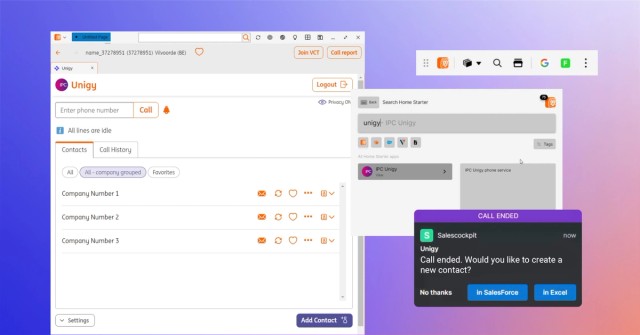July 27, 2020
The Best of Both Worlds: Legacy Migration, Decoupling and Digital Transformation

At OpenFin, one thing we’ve learned in our decade of existence is that driving digital transformation in the financial services industry requires a multi-pronged effort. Education is just one crucial component – it’s important that firms understand the cost and build time efficiencies that web-based applications offer in terms of development, deployment, security and interoperability, but this is only half the battle. For every firm that is convinced by these benefits, there is another that is intrigued, but intimidated by the sheer enormity of the task.
The solution is a phased approach to legacy tech migration. The concept, while not new, is transformative – firms can continue to benefit from the substantial investments they have made in their legacy platforms while pursuing the most efficient path for developers and end users.
Think of legacy technology as a historic building – instead of knocking it down and constructing a new high-rise from the ground up, a process that could take years, the building is adapted, renovated and ultimately presented in an entirely new context. The developers may pour a significant amount of resources into the project, but by retaining the basic structure where possible, they can achieve wholesale transformation without going back to square one.
In the same way, firms can treat legacy technology migration as a gradual process, employing elements of the web where necessary while maintaining the legacy framework for seldom used pieces of the app or non-essential functions. This avoids the need for a wholesale “big bang” rewrite that could take up to 24 months – instead, developers can focus on adding new web content to the existing app and even embedding that content in WPF, WinForms, JavaFX or Swing, allowing for consistent delivery of business value throughout the process. Over 60% of OpenFin’s bank, broker and asset management clients have leveraged our technology for this approach.
In addition, OpenFin is the only provider that allows firms to decouple the web engine from the legacy app’s upgrade cycle. This is crucial because Google provides a major version upgrade of the Chromium web engine every six weeks and a legacy platform that upgrades once a year will miss 8 releases worth of performance, security patches and feature upgrades. As a result, a web version of an app that remains tethered to a monolithic platform will inevitably be less responsive to the needs of the end user, a key frustration for firms that have initiated this process to free themselves from legacy constraints. With OpenFin, this problem is eliminated entirely; the legacy app can continue to upgrade once a year while the web engine can be upgraded more frequently and with zero deployment effort.
Here’s how it works: a firm might be eager to begin the process of modernizing its legacy applications but find that there is simply too much business logic embedded in them to make this an easy process. Instead of undertaking a wholesale rebuild or going to market with a dumbed-down product, developers can choose a third way: use OpenFin to “re-skin” the user interface with, sleek web technologies, but leave the business logic in the legacy app. The OpenFin InterAppBus enables seamless communication between the modern UI and the legacy business logic..
With a clean API between the user interface and the business logic, the process becomes much simpler – firms can “lift and shift” the business logic to the server tier and retire the last bits of legacy at their own pace and are afforded full control over the transition, integrating targeted functionalities and deprioritizing others depending on what is optimal.
This presents a clear use case for analytics around internal apps – to date, most of the focus in this area has been on ones that are client-facing. By tracking which bits of their app get the most use, firms can feel confident in mapping out a migration journey that emphasizes where the impact will be most felt by end users. It’s just another example of digital transformation empowering firms to better serve clients and the industry as a whole.
Take a look here to learn more about how we can help your firm with legacy tech migration. Digital transformation can be a long and winding road, but innovation is occurring all the time. If you’re a firm that understands the value of web apps but is concerned about the legwork it takes to get there, have no fear – we’re making this journey easier by the day, and we can’t wait to help you get started.
Enjoyed this post? Share it!
Related Posts
All Posts ->
Featured
Enhanced Deployment Flexibility with OpenFin's Fallback Manifests
Thought Leadership

Featured
ING Integrates OpenFin for Salesforce to Optimize Workflows
Thought Leadership